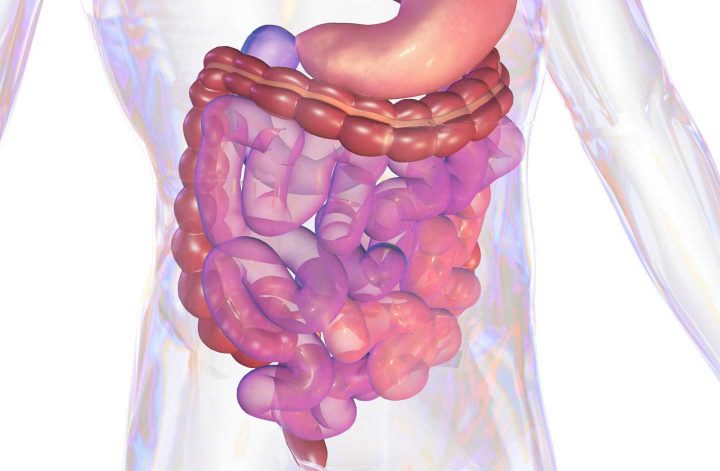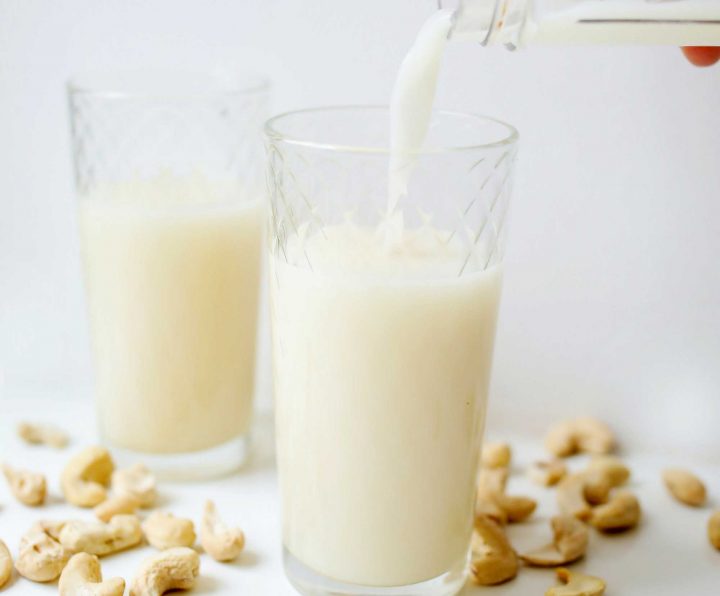As early as 400 years before the birth of Christ, Hippocrates described painful gastrointestinal reactions after consuming milk. Flatulence, colic, diarrhea, nausea, bloating, chronic fatigue and blemished skin – all of this is associated with milk when you can no longer tolerate it for a very specific reason. Globally, around 2.3 billion adults and 600 million children and adolescents are affected. When they drink milk they swell up like a yeast braid.

Breast milk is the first nourishment for mammals as well as humans. Milk sugar or lactose, as it is called by the technical term, is a component of every mammalian milk. Chemically speaking, milk sugar is one of the carbohydrates. It is a double sugar or a disaccharide. In the small intestine, the lactose is broken down into galactose and glucose by the digestive enzyme lactase and absorbed into the blood through the intestinal wall. As a result, it is then converted into energy. If too little or no lactase is available in the small intestine, the lactose ingested with the food is only partially or not at all broken down and absorbed. We are dealing with lactose intolerance.
Lactose Intolerance
It is estimated that around 80 to 90 percent of the world’s population is affected. In Europe and North America, milk and dairy products are among the most important staple foods. In Asian and most African countries, it is rarely used. Worldwide, there is a north-south and a west-east divide in lactose intolerance. In the Scandinavian countries, the proportion of people affected is only around five percent, in Greece already 75 percent and in parts of Africa and Asia between 80 and 100 percent. In the US, about 25% of the white population is considered lactose intolerant, while among black, Native American, and Asian American populations, the prevalence of lactose intolerance is estimated at 75-90%. There is a high number of unreported cases. Mostly adults are affected. The cause of the complaints often remain unknown for years and the patients pass through a long path of suffering before the correct diagnosis is finally made.
Colon Problems
If the lactose in the small intestine is not completely or not at all broken down and absorbed, it reaches the large intestine undigested. There it is broken down by the intestinal bacteria. The gases hydrogen, carbon dioxide and methane are produced as waste products during this bacterial fermentation. Acids are also formed. This leads to gas and bloating. The milk sugar binds a lot of water, this leads to an increase in osmotic pressure, water retention and increased intestinal peristalsis. Bloating, diarrhea and gas are the consequences.

Indefinite Clinical Picture
The symptoms can vary from day to day. It always depends on how many dairy products are consumed. Often there are hidden dairy products that you don’t even think about. They are found in sausages, baked goods, sauces, chocolate and industrially produced foods. Psychological factors such as stress, excitement and fear of the unknown also have a negative impact on well-being. Often, lactose intolerant patients also have fructose intolerance. They not only suffer from symptoms of irritable bowel syndrome, but often also from depression. Chronic lactose intolerance can lead to bacterial overgrowth in the small intestine.
The chronic digestive problems damages the entire enzyme-bearing intestinal mucous membrane. This in turn can cause further digestive problems. Unfortunately, the treating physicians rarely examine specifically lactose intolerance in the case of diffuse gastrointestinal complaints. The consequence of this is a long ordeal until the correct treatment is finally carried out. Self-observation is always good when one suffers from indefinite indigestion. If you leave out all dairy products for two weeks and the symptoms subside and come back when you consume milk again, you can make the doctor aware of the problem in a targeted manner.
Secure Diagnosis
The hydrogen breath test is a good tool for diagnosing lactose intolerance. Milk sugar is dissolved in water. The patient drinks this solution and the amount of hydrogen in the exhaled air is measured regularly for the next three hours. If the proportion of hydrogen in the exhaled air increases, there is a lactose intolerance.
The increase in blood sugar after drinking the lactose solution can also be measured. If there is a lactase deficiency, there is little or no increase in blood sugar level. This method is not entirely reliable, however. Mucous membrane samples by means of a colonoscopy can also provide information about the condition of the small intestinal wall.
Nowadays there is also a gene test available. But it is quite expensive. Another new test involves simply taking a saliva sample and examining it in the laboratory using a special test kit.
Severity and Forms
The lactose intolerance is divided into “light”, “medium” and “severe” depending on the severity. In the light form, 8 to 10 grams of lactose are easily tolerated, in the medium form around 1 gram and in the severe form no lactose at all.
The most common form is primary lactase deficiency. In this form, the lactase activity in the small intestine decreases continuously with increasing age. The newborn infant has the highest lactase activity. That is understandable, since he normally only feeds on breast milk. If the baby is weaned, the enzyme is significantly reduced in the first few years of life. In adulthood, only about a tenth of the original activity remains.
Older people normally don’t tolerate dairy products very well. This is a completely natural process that can be observed in almost everybody.
With secondary lactase deficiency, the deficiency is a side effect of another disease in the digestive tract such as celiac disease, Crohn’s disease, ulcerative colitis or acute gastroenteritis. Treatments with antibiotics or cytostatics (cell poisons) can also temporarily damage the intestinal mucosa and its enzymes. When these original diseases are healed, sufficient lactase can usually be produced again.
An extremely rare form is the congenital lactase deficiency. The infants already suffer from a lactase deficiency shortly after birth.
Therapy
Therapy depends on the severity of the disease. Everyone concerned has to find out for themselves how much lactose they can tolerate. With a low-lactose diet, where around 8 to 10 g of lactose can be tolerated, cheese and sour milk products can be eaten in small quantities. Dishes containing milk can be prepared with soy milk or other alternative types of milk. Sour milk products are better tolerated because the lactose-breaking enzymes in the lactobacilli from which they are made continue to work in the digestive tract and can break down milk sugar.

There are also lactose-free products on the food market. Lactase is added to the milk or milk product, which already breaks down the milk sugar. This milk is much sweeter because lactose is not as sweet as the broken down glucose and galactose.
As a result of better consumer protection, since 2005 all ingredients in a food that are classified as allergy triggers or intolerance reactions have had to be listed on food labels across Europe. Since 2006 in the US the Food Allergen Labeling And Consumer Protection Act is in effect with the same purpose. Allergy labeling also includes lactose. It is not uncommon to find lactose in products in which one would not expect it. In the event of intolerance or allergies, the lists of ingredients must always be carefully studied. Often there are also manuals available in which the products that are lactose-free are listed.
Calcium Supply
Calcium can be easily obtained from plant sources. These include broccoli, fennel, nuts, sunflower seeds, sesame seeds, nettles, calcium-rich mineral waters, calcium-fortified fruit juices, and soy milk. You can definitely live without dairy products if you are interested in nutrition and think about where else the calcium can be found in the food. Nowadays, when mass livestock farming leads to all sorts of problems and we have just shown how problematic dairy products are for many people, it is worthwhile to think about a diet that is free or at least poor in animal products.

Wrong Development Aid
Lactose intolerance is particularly widespread in countries receiving development aid. What kind of goods are being sent there? For a large part they are surplus products from the industrialized nations. This also includes powdered milk. It is distributed in large quantities to sections of the population who do not tolerate dairy products at all.
Take the Indians in their reservations as an example. They also belong to the group that is genetically determined to be almost 100% lactose intolerant. They receive powdered milk deliveries with great regularity. Fortunately, the Indians know that they would rise like a yeast braid if they were to drink this milk. But what do you do with the milk powder? Some use it to mark the playing fields on their sports grounds.
But if milk is distributed in parts of Africa where small children are already suffering from lactose intolerance, it is like throwing gasoline into the fire. The little ones, who are already suffering from edema from hunger and have bulging stomachs, get diarrhea and colic after consuming milk.
Conclusion
Today, lactose intolerance no longer requires giving up the consumption of dairy products because we have medicines and lactose-free dairy products at our disposal. But even better is a balanced dairy free diet and lots of exercise. There are entire population groups who cannot tolerate and do not consume milk and dairy products and are still well nourished with healthy bones. We can belong to this group if we eat a balanced diet, exercise a lot and adopt a sensible lifestyle. To this end, God, our Creator, gave us the power of reasoning. It is our privilege, even our responsibility, to be concerned about some sensible, healthy lifestyle changes.

Stay Always Up to Date
Sign up to our newsletter and stay always informed with news and tips around your health.

Esther Neumann studied Nutrition at the University of Vienna. Since then she served as an author for the health magazine “Leben und Gesundheit” and conducted health lectures in various locations of Austria.
Do not forget the other part of dairy milk breakdown…
Galactose is a serious part of coronary heart disease.
I refer you to the 200 pages of the book, ” Milk and
Mortality, the Connection between milk drinking and
Coronary heart disease ” by David B. Gordon, Ph.D.
1999, ISBN 0-9671605-0-2
Yes, there is still much that can be said about milk. This article was focusing more on lactose intolerance. There are still other types of milk allergies, and even for those who tolerate milk, there are plenty of reasons to abandon it altogether.